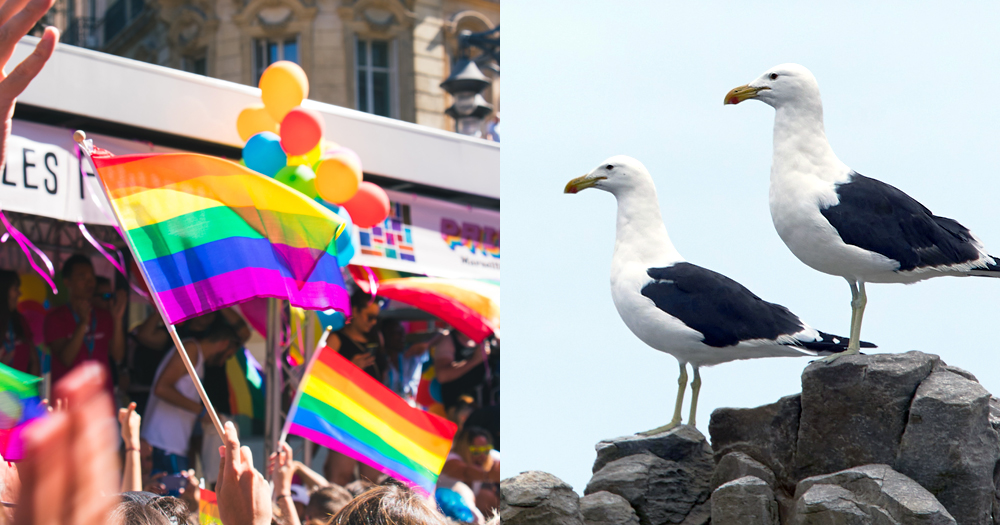LGBTQ+ issues have been pretty common in the news lately, but humans are not the only animals that may fall into one of these categories.
The Golden Fleece Award (1975–1988) was a tongue-in-cheek award given by Senator William Proxmire to public officials in the United States for squandering public money, its name taken from the actual Order of the Golden Fleece, a prestigious award created in the late-15th Century. One example of an award was that given to to the National Science Foundation for awarding researchers a grant to study homosexuality in seagulls.

The NSF annually comes under criticism from Congress because of the nature of some of the exotic studies it funds. “I wonder if anyone can tell us if there were any fruitful results from the study of gay seagulls,” said Rep. John H. Rousselot (R-Calif.), referring to publicity about a 1977 study by the University of California that cost $62.300.”This is a study of hormones,” said Rep. Thomas R. Harkin (D-Iowa) in defense of the bill. “What they’re trying to do is find out why these birds do what they do.”
Homosexuality in birds, however, is not news.George Murray Levick, who did his research on Adélie Penguins in 1910, found numerous examples of unusual sexual behavior, including males mating with males, but for propriety reasons produced his paper in secret and circulated it only among trusted colleagues, not publishing his findings more widely in scientific journals.
Roy and Silo, two male Chinstrap Penguins at New York’s Central Park Zoo have been inseparable for six years now. They also have sex, ignoring potential female partners. (Their story inspired the award-winning 2005 children’s book And Tango Makes Three.)But they are in a zoo; does this happen in the wild? Yes. Homosexual behavior has been recorded by scientists in over 1500 animal species to date, and animals that form long-term pair bonds – such as many birds – may last their lifetimes.
There are many species of birds that exhibit homosexual behavior, including same-sex pair bonding, courtship, and even raising young together. For example, male-male pairings have been observed in species such as albatrosses, Black Swans, and penguins, while female-female pairings have been observed in seagulls and parrots. Nearly 20 percent of Greylag Geese couples are composed of two males.
Homosexual behavior in birds is thought to have a variety of causes, including social bonding, competition for mates, and genetic predisposition. Recent research has demonstrated males of polygamous species (where males tend to mate with several females) have a higher rate of homosexuality than in monogamous species and females of monogamous species have a higher rate of homosexuality than females of polygamous species. In both cases, parental care is less for polygamous males and monogamous females. The incidence of homosexuality is also higher in birds with precocial young than in those with altricial young, again allowing for less intense parental care. Why the incidence of homosexuality is higher in these circumstances has to do with the social structure of the species, but the reasons are not all that clear.
Perversion is perversion. God gives those who persist over to their perversions. Not His intended plan for man.
The studies of science and ornithology should not pollute their activities to promote/support social idealogy of a few in society.
We should hold man to a higher standard than soulless animals.
I don’t know what to say. Would you rather that scientists ignore reality?
Pingback: Sexual Preference in Birds – Ornithology - Vetezi
Gay birds!!! I’m a lesbian and I love birds. This article is great, thank you!! ??️?